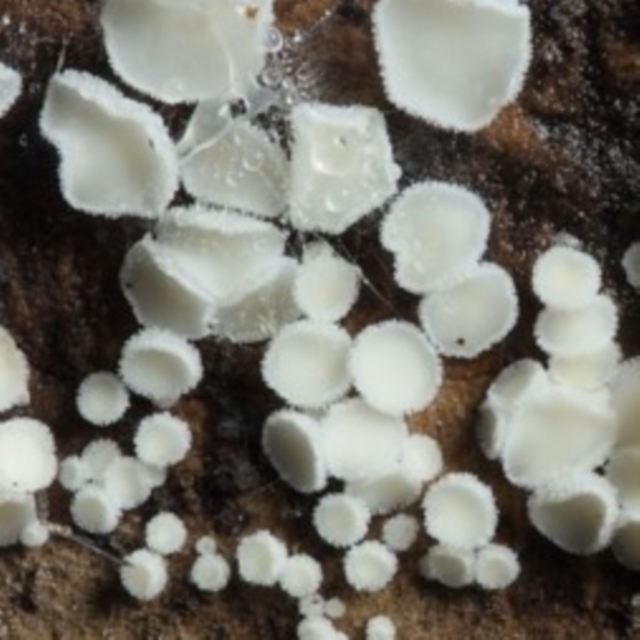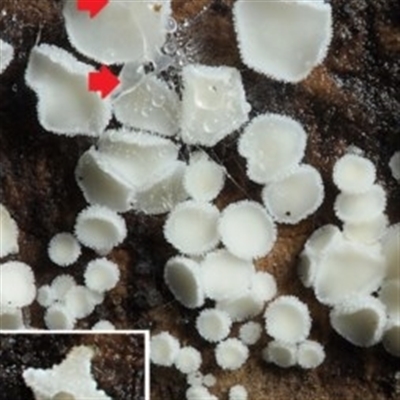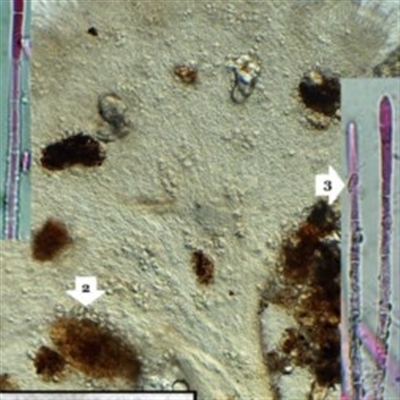Dasyscyphella nivea
The fruitbody consists of smooth, shallow cup atop a stem. The cup may grow to about 2 millimetres in diameter, with stem length similar to the cup diameter. The fruitbody is totally white when in prime condition and (apart from the smooth cup surface) has a dense covering of very short hairs (up to about a tenth of a millimetre long).
Spooner (see below) writes: The exudation from the tips of the hairs is characteristic, appearing as watery droplets when fresh, gumming the hairs together and appearing as lumps of amber or orange-coloured resinous matter when dry. The hairs are white when fresh, but a distinctive pale orange when dry. Raitviir (see below) notes that this is one of the Dasyscyphella species in which calcium oxalate crystals are present.
The fruitbodies appear on dead wood.
Look-alikes
Lachnum virgineum is a very close look-alike with stemmed, hairy, whitish to pale yellow fruitbodies of similar size on dead wood (and Dasyscyphella nivea had previously been known as Lachnum niveum). Spooner notes that the hairs in Lachnum virgineum "lack crystals or resinous exudate" so, given his other comment above, this suggests that droplets would indicate Dasyscyphella nivea. Of course, if they are not present, you'd be none the wiser. In humid conditions, you sometimes find water droplets condensing on hairy fungi and so you may wonder about the usefulness of droplets as a visual identification feature - but the feature is noted in various European web or sources. See also my comments in https://admin-canberra.naturemapr.org/Community/Sightings/Details/4295699.
One feature of both Lachnum and Dasyscyphella is the dense covering of short, multi-cellular hairs over the fruitbody (except for the smooth cup surface). In Lachnum the hairs have a fine, granular coating throughout their length whereas in Dasyscyphella the apical cell and sometimes the sub-apical cell lack that granular coating. A look through Raitviir's paper shows Dasyscyphella crystallina, not known from Australasia, differs in microscopical detail and Ratviir had once thought them identical.
References
Raitviir, A. (2002). A revision of the genus Dasyscyphella (Hyaloscyphaceae, Helotiales), Polish Botanical Journal, 47, 227–241.
Spooner, B.M. (1987). Helotiales of Australasia: Geoglossaceae, Orbiliaceae, Sclerotiniaceae, Hyaloscyphaceae, J. Cramer, Berlin/Stuttgart (= Bibliotheca Mycologica, 116).
Dasyscyphella nivea is listed in the following regions:
Canberra & Southern Tablelands
Species information
- Dasyscyphella nivea Scientific name
- Common name
- Not Sensitive
- Local native
- Non-invasive or negligible
- Machine learning






